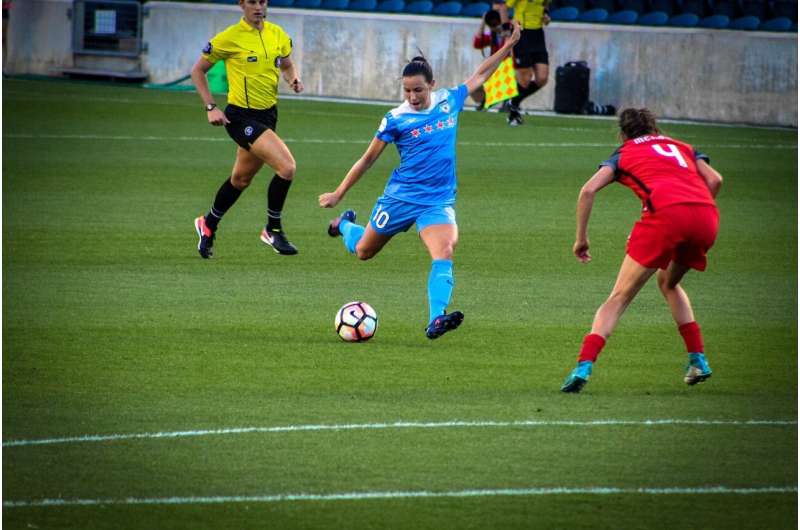

As the Australian Football League Women’s (AFLW) finals edge closer, players across the league are preparing to push their limits. Now, new research from the University of South Australia shows that AFLW players are pushing their physical limits more than ever before.
In the first study to investigate the changing demands of AFLW athletes over the most recent seasons (2022–2023), researchers have found that players are running farther, covering more distance at higher speeds, and accelerating more often.
Conducted in partnership with the Adelaide Football Club, the study assessed GPS data from 42 athletes across seasons six to eight (2022–2023), representing 777 player-match profiles.
The study is published in the International Journal of Sports Physiology and Performance.
Key findings include:
- Total running distance increased by 344 meters (season 6–7) and a further 971 meters
(season 7–8). - High intensity running (greater than 19km/h) increased by 70 meters per match (season 6–7), with midfielders increasing by 122m.
- Very high intensity running (greater than 21km/h) increased by 36 meters per match (season 6–7), with midfielders increasing by 70m.
Sprint distance, maximum velocity, speed, acceleration and player load (a measure of how physically demanding a match is on an athlete) also rose, with advances more pronounced among midfielders and defenders.
Lead author and Ph.D. researcher, UniSA’s Brooke Jenner, says understanding these changes is vital for athletes and high-performance staff to properly prepare for the demands of competition.
“Since the AFLW launched in 2017, the game has changed enormously. Matches are longer, the rules and style of play have shifted, and players’ experience, skills, and tactical awareness have advanced dramatically,” Jenner says.
“Our research shows that since 2022, players have become fitter, run harder for longer and reach higher speeds more often. This suggests that improvements in talent pathways, training practices, and high-performance support are translating into stronger on-field performance. By understanding how the game is changing, coaches and high-performance staff can better tailor training programs to meet the physical demands of the modern AFLW competition.”
Research partner and High-Performance Manager at the Adelaide Football Club, Jordan Sellar, says the study reinforces the importance of ongoing improvement to meet the rising physical demands of the AFLW.
“The AFLW continues to evolve every season, and with competition at an all-time high, we need to keep pushing our preparation and performance standards,” Sellar says.
“Understanding how the game is changing is key to delivering the right training and support for our athletes. Research like this helps ensure our programs are based on evidence, not assumption. These findings highlight just how critical it is for players to be exposed to high intensity running demands in training.
“As match intensity rises, so too must our focus on developing the peak strength and fitness levels required for success in the AFLW. Partnering with UniSA is one way we’re working towards this.”
The research team also includes UniSA’s Dr. John Arnold and Dr. Hunter Bennett, Swinburne University’s Prof Steven Milanese, and Adelaide Football Club’s Darren Burgess.
More information:
Brooke Jenner et al, Evolution of Athlete Match Demands Across 3 Australian Football League Women’s (AFLW) Seasons, International Journal of Sports Physiology and Performance (2025). DOI: 10.1123/ijspp.2024-0414
Citation:
Rising demands, rising performance: Australian Football League Women’s players push limits in finals season (2025, October 21)
retrieved 21 October 2025
from https://medicalxpress.com/news/2025-10-demands-australian-football-league-women.html
This document is subject to copyright. Apart from any fair dealing for the purpose of private study or research, no
part may be reproduced without the written permission. The content is provided for information purposes only.